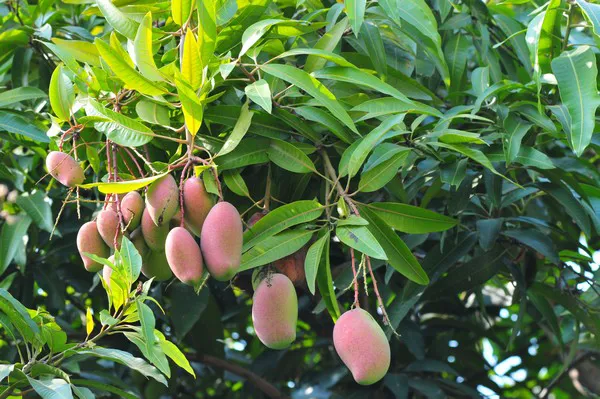Mangos are available in U.S. stores year-round, and throughout the year importers look toward different origins to be able to meet demand. Freska Produce is a California-based import company who import their mangos from Mexico, Ecuador, Peru, Brazil, and Guatemala. “We are currently getting in our mangos from Ecuador – their season runs from October to January – and in December the Peruvian season will begin. The bulk of our volume throughout the year comes from Mexico, whose season runs from January through September,” Gary Clevenger of Freska Produce says.

Origins complement each other through variety
“The different seasons from these countries do overlap, but they offer different varieties so they end up complementing each other, such as the Honey mangos from Mexico and the Kents from Peru during January through March,” Clevenger explains.
The main varieties on the market are Tommy Atkins, Kents, Keitts, Hadens, and Atualfos or Honey Mangos. Clevenger says: “There are currently no new varieties on the market in large enough volumes to make a difference at this point. While the U.S. does import some Australian mangos, the distance increases the prices and they are very expensive once they reach California.”
“We have been seeing good quality out of all the regions we work with – the sizes coming from Ecuador are a bit on the small side this year, but once the Peruvian season begins in December we should see a return to normal for the sizes on offer in the U.S.”
Mango consumption is on the rise
The company distributes throughout the U.S., but also in Japan, New Zealand, Australia and Europe. Clevenger says: “The volumes of the mangos have been good this year and very comparable to previous years. That being said, we do expect major growth for the mango industry. Demand has been very good and getting better. We see that each year the FOB’s are rising and volume is increasing, which is a good indicator of the growth cycle of mangos. We see a lot of potential in this fruit and we believe that in the next five years we will double the consumption in the U.S.”
He adds: “There are points in the year where the incoming volume is high – specifically during the summer months – but during these times we work together with retail partners to keep up the movement. The market has come off with a bit more volume right now, and now that we are getting closer to Thanksgiving we do actually see effects on the mango consumption as well. Mangos compete with all the holiday offerings – there are a lot of recipes around that give a fun, new twist to Thanksgiving dishes through the use of mangos. I always put some mangos inside my turkey while it cooks and it really helps bring out some great flavors.”
New offerings: Dried mango
In order to complement their offering of fresh mango, the company has also been working with dried mango. “We have recently started a dried mango program to offer these for retail. We offer 100% natural, organic dried mango strips, with no additives or sugar. We have had a really good reception to these mangos and have been seeing tremendous growth. They really are a great healthy alternative to the fresh mangos, that offer just a bit more convenience than the fresh product because they are ready-to-eat,” Clevenger concludes.
For more information:
Gary Clevenger
Freska Produce International
Tel: +1 (805) 650-1040
Email: gary@freskaproduce.com
www.freskaproduce.com
